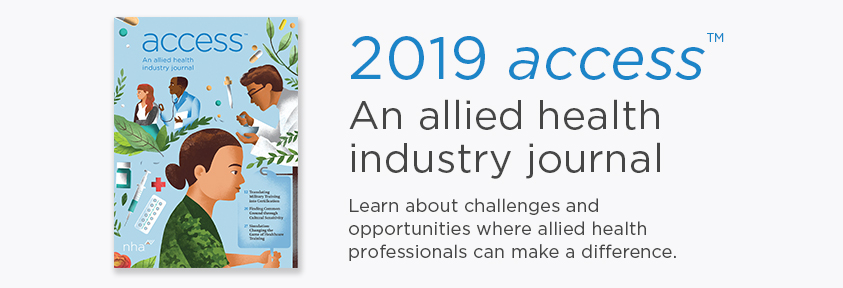Modern healthcare organizations face great challenges in achieving the “Quadruple Aim” of patient satisfaction: improved outcomes, reduced cost and provider/staff experience.1
As care shifts to the outpatient setting, practices are improving processes through new initiatives. Process redesign is not simple and needs a strong implementation methodology. Healthcare organizations have employed numerous models, but some of the most impressive results are from those that use a Lean management method.2,3
Lean is derived from the Toyota® manufacturing system which focuses on “the complete elimination of all waste” to create value for the customer and make employees’ jobs easier and safer.4 While patient care differs from manufacturing automobiles, Lean concepts are surprisingly relevant in healthcare.
Lean is a comprehensive management approach. Other process improvement methods involve a series of “improvement projects,” with defined beginning and end points, making them difficult to sustain. In contrast, Lean is based on the philosophy of Kaizen, or continuous improvement. Kaizen frames issues with visual tools to stimulate innovation from front-line workers. New ideas then lead to subsequent improvements.
Removing waste — wait times, defects, excessive motion, over-processing — can yield dramatic results. In the outpatient setting, many Lean tools can be leveraged to achieve “quick wins” with providers and staff to earn buy-in. The core concepts outlined here can lead to significant improvements with little to no capital investment.
Whole-team participation
With Lean, managers and supervisors no longer need to solve problems from the top down. Instead, they lead team-based improvement efforts alongside the staff. They coach staff to run multiple Plan-Do-Study-Act (PDSA) cycles to test new ideas. Executive leaders are accessible, and frequently present in the office, listening to ideas and reviewing data and improvements. This engages the workforce, which in turn can improve employee retention and recruitment.
Co-location and continuous flow
Many offices rely on “batching” clinical tasks: seeing patients first and tackling paperwork at the end of the day. Often, providers and staff are located at opposite ends of the office, making communication difficult. Providers often take work home in the evening. There are numerous downsides to batching, including delays in patients request fulfillment, rework and unnecessary handoffs. Low morale often develops as a result. Co-locating — where providers and staff work physically side-by-side to complete tasks — allows for seamless communication and processing. Teams are “in flow” throughout the day. This makes the office more efficient and sustainable, and level-loads the clinical team.
The 5S System
5S is a visual management method to organize the workspace and improve processes. The 5S concepts can be applied to physical space such as exam rooms, the front desk and supply closets, to reducing waste, or clinical processes.
The five steps are:
- Sort. Sort items as necessary or unnecessary. Remove unnecessary items from the workspace and unnecessary steps from the workflow.
- Simplify. The necessary items or steps should be simplified (labeled or color-coded bins are useful to organize supplies).
- Sweep. Make it easy to visually sweep the environment and quickly identify an abnormal condition (i.e. supplies that need to be restocked).
- Standardize. Be sure to standardize to maintain these steps.
- Practice self-discipline. Everyone must maintain self-discipline to keep the new system running smoothly.
With 5S, staff no longer needs to hunt for supplies and defects become obvious so they can be fixed quickly.
Large practice sees success in using Lean
In a large internal medicine practice in Salem, Massachusetts using 5S, each exam room is stocked exactly the same way and visual cues (called kanban cards) are used to signal that an item needs to be restocked. The office now only uses one medical supply closet and par levels are much lower. Ordering is still done weekly, but it takes the lead MA five minutes instead of 2 1/2 hours, freeing up the MA to do more value-added work. Supply costs have gone down dramatically due to not over-ordering and items not expiring. Now, the practice only orders what is needed, when it is needed. Supply costs across the group were reduced by $150,000 in the first year of 5S efforts and have continued to decrease.
Standard work
Practices have variable workflows, and providers have their own preferences. This is challenging for staff, who strive to do their best work as expectations and needs change. It is also difficult to identify areas for improvement when everyone does things a different way. Standard work allows staff to do tasks the best way, every time. For example, if all medical assistants room patients the same way, the provider knows exactly what to expect when they walk in. Just as important, medical assistants know that they have done their jobs correctly. In keeping with the concept of Kaizen, standard work practices are only standard until further improvements are made based on ideas from staff and providers.
Implementing Lean practices
As with any change, there can be challenges with implementing Lean Management. A successful implementation requires dedicated support from leadership. Executives need to establish the vision, align with the strategic plan and consistently reiterate the “why” to build consensus. Creating a small Kaizen team with resources to devote to training, coaching and data collection is also enormously helpful.
It can be tempting to try to tackle the hardest problems first. However, it often works better to start on small issues with early adopters. This group can serve as champions to spread improvements, build trust in the method, and lead the next wave.
Several pioneering healthcare organizations have demonstrated successes with Lean, and many are beginning their own Lean journeys. All share the same goal of achieving the Quadruple Aim: to pursue better, safer patient care at lower costs, in a satisfying and sustainable work environment for providers and staff. Lean methodology can help organizations of all types meet the challenges of modern healthcare.
References
- Bodenheimer, T. and Sinsky, C. (2014). From Triple to Quadruple Aim: Care of the
Patient Requires Care of the Provider. Annals of Family Medicine; 12:573-576. - Toussaint, J and Gerard, R. (2010). On the Mend: Revolutionizing Healthcare to
Save Lives and Transform the Industry. Lean Enterprise Institute: Cambridge, MA. - Kenney, C. (2011). Transforming Healthcare: Virginia Mason Medical Center’s
Pursuit of the Perfect Patient Experience. Productivity Press: New York: NY. - Toyota Production System. http://www.toyota-global.com/company/
vision_philosophy/toyota_production_system/




